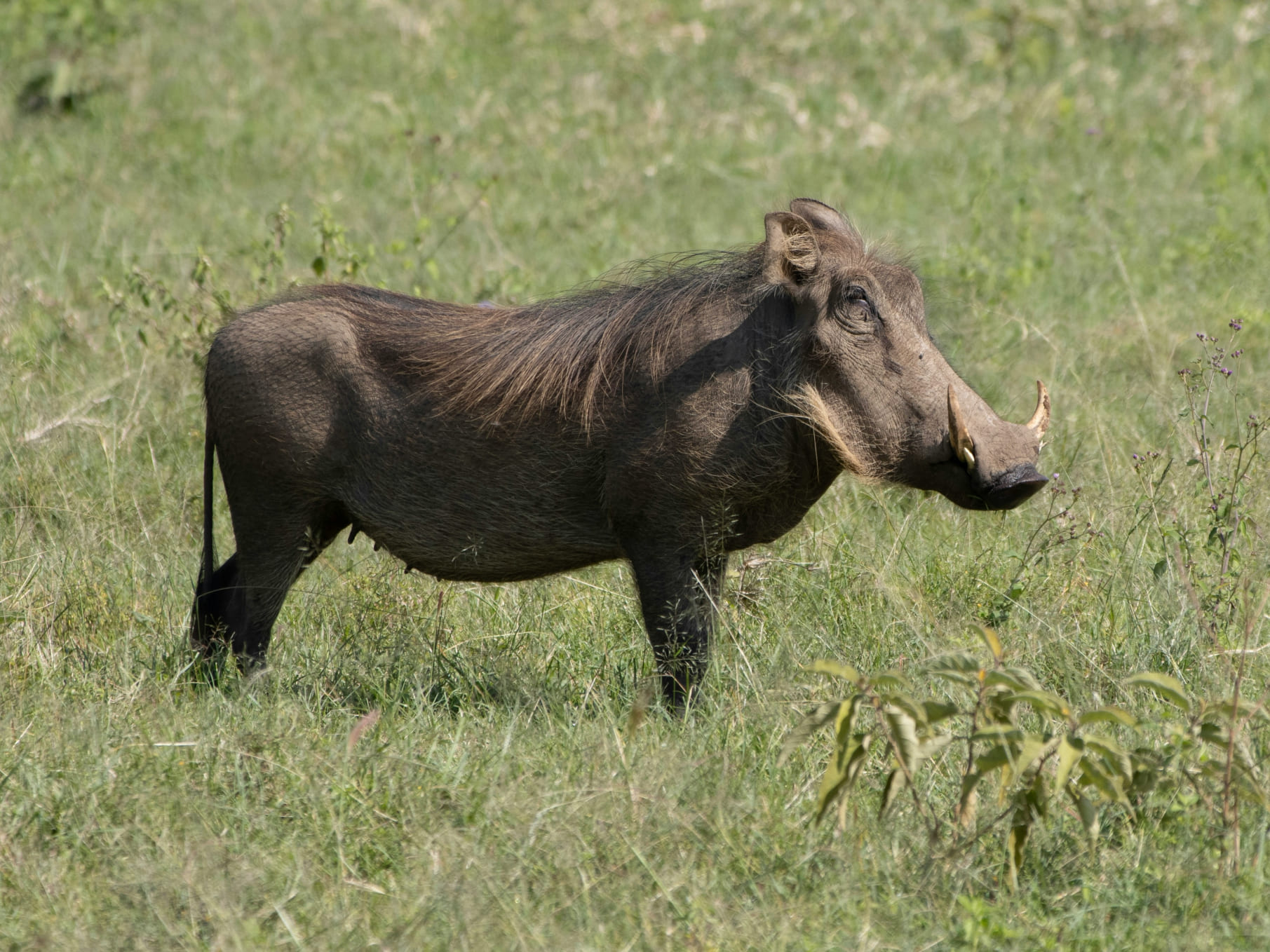Warthog: The Resilient Forager of the Savannah
The warthog, known for its distinctive tusks and rugged appearance, is a member of the wild pig family and thrives in the grasslands and savannas of Africa. Despite its rough exterior, the warthog is highly adaptable and resourceful, using both its strength and agility to survive in an environment filled with predators.
Habitat and Adaptations
Warthogs are commonly found in open areas like savannas, grasslands, and woodlands. They’ve adapted to these regions with thick hides and sparse body hair, helping them endure both heat and the bites of insects. Unlike other pigs, warthogs can survive long periods without water, relying on moisture from the plants they consume. Their large tusks, used for digging and self-defense, are essential tools for foraging and evading predators.
Behavior and Social Structure
Warthogs are social animals and often live in groups called sounders, typically consisting of females and their young. Males are more solitary but will join groups during mating season. Warthogs are known to use abandoned burrows for shelter, entering backward to defend themselves from predators. This behavior underscores their resourcefulness and ability to adapt quickly to new situations.
Challenges and Conservation
While warthogs are not currently endangered, they face threats from habitat loss, hunting, and competition for resources. Conservation efforts focus on maintaining their natural habitats and regulating hunting practices to ensure stable populations in the wild.

